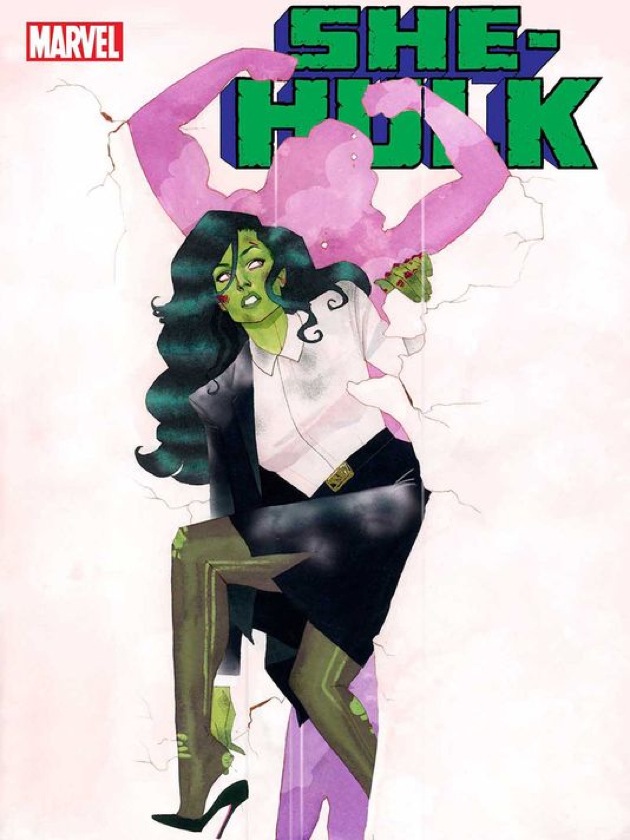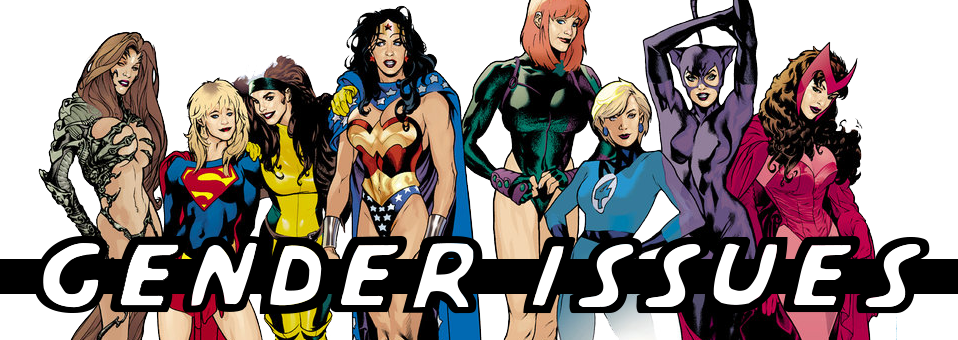Mara Wood is a school psychology doctoral student at the University of Central Arkansas. Her research focus is on the educational application of comics as well as their use in therapeutic settings with children and adolescents. She is a regular contributor for Talking Comics, a co-host on The Missfits podcast, and writes about psychology, comics, books, and Dungeons & Dragons on her personal blog. You can find her on twitter as @MegaMaraMon
Maria Werdine Norris is a final year PhD candidate at the London School of Economics and Political Science. Her research is on British Counter-terrorism strategy and legislation, with a focus on nationalism, security and human rights. You can find her on Twitter rambling about comics, human rights and magical girls as @MariaWNorris
We are very lucky with Talking Comics. Here we have a safe space, an inclusive community where we feel supported enough to have healthy, civil disagreements. It is easy to forget that outside Talking Comics, reality is different. Another week has brought in more reports of female comic book fans and creators being harassed in social media. Comic creator Kate Leth was targeted by an account created entirely to impersonate and harass her. After revealing her history of harassment at the hands of Chris Sims, Valerie D’Orazio faced even more attacks in social media and has decided to leave Twitter. Attacks on female fans in the comics community is almost commonplace so we’ve decided to put our heads together and figure out where this is coming from.
We think that, at the very core, this is about gendered identity, where women have been cast as the threatening Other.
Identities are inherently relational. In other words, the construction of identity relies in the construction of boundaries between who belongs and who is the outsider. Boundaries are essentially the raw materials of identity, explaining the mechanisms behind social exclusion and identity creation. According to Charles Tilly (2004) , they
happen at the small scale of interpersonal dialogue, at the medium scale of rivalry within organizations, and at the large scale of genocide. Us-them boundaries matter
Boundaries are usually split into symbolic or social boundaries. Symbolic boundaries are popular concepts regarding who does and does not belong in society. Social boundaries, on the other hand, are general forms of social differences (Lamont & Molnár, 2002). The different types of boundaries build on each other, with symbolic boundaries preceding social boundaries. As such, when certain conceptions of ‘us’ and ‘them’ becomes common knowledge, they tend to turn into more generalised forms of exclusion, such as racism, sexism and xenophobia. Social psychologists call this in-group bias, and it is present at nearly all levels of human interaction. The isolation that one child feels on the playground is the same kind of exclusion seen at sports games between two teams. While the foundation of in-group is important in establishing a sense of identity, it can be detrimental to the treatment of those outside of your group.
Why are women so easily excluded? It’s been established time and time again that women were involved readers during the early years of comic book publishing. What makes the recent attention drawn to women as a part of the comic book audience so threatening? In order to understand this mindset, one has to understand the inherent beliefs of sexism. A persistent symbolic boundary underpinning sexism is that women have a different value to men. Men are seen as more valuable in society, evidenced by things like the persistent gender pay gap, and female infanticide in the more extreme side of the spectrum. This symbolic boundary is at the heart of why women are considered to be disposable. That’s why we violence against women is so prevalent. And in comic books, it is why Gail Simone felt the need to create Women in Refrigerators, as female characters are abused in order to serve as a plot device in male characters’ journeys. It is then no wonder that comics were perceived as a boy’s club.
But whilst this is changing, the symbolic boundary of differing worth remains. This is represented socially in the community and the industry. For female fans, fewer merchandise for women and featuring women is available. Action movies have disproportionately more male actors than female actors. Comments such as “Don’t throw like a girl” and “Don’t cry like a little girl” are supporting the idea that women are of an inferior status than men. And, in the comics industry, most companies have few women creators and editorial staff. Even worse: women who read comics are at a higher risk for harassment online just for having a different opinion. Even within the Talking Comics community, Stephanie has endured harassment from listeners even after Steve commented that he had the exact same opinion as she did. While women attempt to break through the established boundary to be recognized as a worthy voice, the in-group bias rears its head. Comments about how ‘feminazis’ are ruining comic books are prevalent on social media platforms. This type of blanket statement degrades the female audience into one stereotype and adds a negative connotation to their presence. it is the symbolic boundary having taken the form of a very real social boundary.
The push for more female characters and women creating comics has upset the status quo, a concept that comic book fans in general do not care much for. New costumes, new storylines, new characters…suddenly the industry is responding to a multitude of voices in the audience rather than just one. More voices means more variety in comics; more variety in comics will bring more readers who in turn will add their voice to encourage the creation of even more comics. Isn’t that a good thing?
But, suddenly, a safe haven for a particular group is gone. The in-group is shaken as the boundaries change. There is less of a stigma attached to reading comic books. There are clubs on college campuses dedicated to reading comics. There are increased graphic novel collections at libraries (with a growing recognition that they are often the most circulated materials). There are record numbers of fans attending comic cons around the world. Loving comic books has become mainstream. And the in-group that once felt safe and secure has lost its boundary. The feeling of being different and unique is gone, and, in exchange, the feeling of being lost in a crowd takes its place. This feeling is what Catarina Kinnvall terms existential anxiety and ontological insecurity, where individuals seek reaffirmation of one’s self identity by drawing closer to any collective that is perceived as being able to reduce insecurity. In other words, change freaks people out.
But this insecurity is no excuse for how women are treated. Harassment, threats, and ridiculing will not re-establish the social boundary some male comic book fans believed they had prior to the growing number of female fans. Women have not ‘invaded’ the comic book fandom to ruin comics; rather, women are calling for more comics that feature accurate and respectful portrayals of women. Additionally, the use of women as objects or plot devices no longer makes sense, unless a creative team wants to isolate half their potential readership.
Women love comics just as much as men. There is no intention to ruin comics, censor comics, or ridicule male fans. We should be celebrating the end of Boy’s Club and embracing change. Women are no longer the Other in the geek community, and it is time they stop being treated as such.








